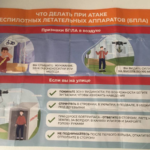Language policy in the modern world

The need for identity lies in the desire (conscious or unconscious) to use “one’s own” language, naturally acquired in the first years of life, in any communication situation. Such a language is called mother tongue, or native (the latter term may have other meanings). An extreme case of satisfying identity needs is monolingualism. Even if a person has more than one maternal tongue (for example, if the parents speak different languages or the child is raised by a nanny who speaks a different language than that of the parents), there is no absolute equality of languages, and one language always becomes the first for a person, and another becomes the second one [Edwards, 1994, p. 3].
The concept of the mother tongue also has a clearly defined social meaning. In most cases, the mother tongue is the language of one’s own ethnic group, one’s own culture. Using a “foreign” language is easily associated with a feeling of ethnic, cultural, and often social inferiority. Of course, there may also be a compensating factor – a feeling of special prestige of a “foreign” language, say, English or Russian. Many researchers note the spread in US public opinion of the idea of monolingualism (primarily English) as a feature of cultured and wealthy people and the connection of bilingualism with poverty and backwardness [Garcia, 1995, p. 142, 145-146; Loveday, 1982, p. 8; Skutnabb-Kangas, 1983, p. 66; Tollefson, 1991, p. 12; Edwards, 1994, p. 4].
In the USSR, Russian officially became the state language for the entire country only at the very end of its existence – from April 1990, that is, when its role began to be questioned in a number of republics of the USSR.
The extinction of languages in the modern world is associated not so much with loss as with the assimilation of their speakers. Such languages go through all stages of the path from monolingualism as proficiency in the language of one’s own ethnic group through bilingualism to monolingualism as proficiency in a language that was previously foreign. The penultimate stage before extinction is the situation of a “linguistic ghetto,” when the language is still remembered and sometimes spoken among a few fellow tribesmen, but the possibilities for its free use are extremely limited [Laponce, 1987, p. 42].
The stability of a language depends on many reasons, including the number of speakers, their cultural orientation, and the language policy in the state.
It is often difficult to predict the fate of any minority language.
The factors contributing to its preservation may be the most unexpected. For example, they note the “grandmother motif”: women, who do not speak the language of their ethnic group with their children, begin to speak it with their grandchildren: “Is not this “grandmother” kind of permanent social function in the linguistic community, regardless of generation?”
[Vakhtin, 2001, p. 284].
The process of changing a language under any language policy is never completely voluntary. That is, all the imperial stories about how people simply do not want to know their native language are only half-truths or post-truths. They are forced not to want to, this attitude is instilled with the help of language state policy. This applies to the transition from monolingualism to bilingualism, and to the subsequent transition from bilingualism to monolingualism as proficiency in another language. Even if there are no administrative measures, pressure is exerted by the economic, political and cultural situation in the country [Skutnabb-Kangas, 1983, p. 66 67).
But the loss of the mother tongue can be considered by one or another ethnic group as a phenomenon, albeit forced, but having its advantages. A conflict arises, characterized by one of Irish linguists: what is good for languages as a whole may be bad for their speakers as individuals, especially from the point of view of material well-being [Ahlqvist, 1993, p. 16]. As J. Edwards points out, for many peoples there is a painful dilemma: either to lose their language or live a backward rural life into which their status as a people subordinate to empires drives them. [Edwards, 1994, p. 107).
The status of the bilingual population, as well as government policy in relation to it, may vary, but its certain inequality with monolingual speakers of the dominant language can be felt and it can create a potentially conflict situation.
For example, in the USSR, both Russians and Russian speakers, with rare exceptions (for example, in linguistically very homogeneous Armenia), did not speak minority languages. This situation remains in modern Russia. However, those whose mother tongue was different had to sacrifice either the need for identity or the need for mutual understanding.
Both categories numbered in the millions during Soviet times, but the situation was not symmetrical. The need for mutual understanding was usually sacrificed unconsciously, without expanding social ties (however, in the Baltic states sometimes they consciously refused to speak Russian even at the cost of loss of profit, for example, sellers).
The need for identity was sacrificed consciously. The possible feeling of ethnic and linguistic inferiority imposed by the occupier was compensated by the supposed prestige of the Russian language and the opportunities for advancement, artificially created by the state, if a person is proficient in it. While the existence of a unified USSR seemed self-evident to the mass consciousness, mastering the Russian language was accepted by the “silent majority” as, if not the best, then at least a natural situation.
But during the era of perestroika, the dissatisfaction hidden by the state in the field of language came to light. “Languages in contact easily become languages in conflict” [Edwards, 1994, p. 89).
In Tsarist Russia, a strict assimilation policy (especially harsh during the “liberal” reign of Alexander II – the Ems` Decree, the Valuev` Circular) was also carried out in relation to languages with a large number of speakers, often these speakers had a developed national identity. Therefore, it caused particular discontent. However, this tough policy was observed where the empire was especially afraid of attempts at decolonization (Poland, partly the Baltic states and Transcaucasia, Ukraine, Belarus). In relation to the “foreigners” of Central Asia or Siberia, the question of their linguistic assimilation was not raised, since it was believed that they had not yet “grown up” for this.
The People’s Commissariat for Nationalities headed by J.V. Stalin, who wrote in 1918:
“There is no compulsory “state” language – neither in legal proceedings, nor in school! Each region chooses the language or languages that correspond to the composition of the population of this region, and full equality of languages of both minorities and majorities is observed in all social and political institutions” [Stalin, vol. 4, p. 70].
And G. F. Grinko, a party official, considered it unacceptable to impose the Russian language in the army and demanded that Russian communists who worked in national regions voluntarily abandon the Russian language, since “the proletariat in the field of the national issue must be ready for the greatest self-sacrifice” [National Moments …, 1923, p. 40].
Measures were taken for translating office work, legal proceedings from Russian into minority languages, for spreading national schools, etc.
This policy, of course, was a reaction to the assimilationist tsarist policy, which was hated by many. The ideas of equality of languages and language policy aimed at achieving it were supported by Russian communists, left-wing intellectuals in the national republics, and even some intellectuals who did not accept the Soviet course as a whole. For example, emigrant N. S. Trubetskoy in 1925 approved “the refusal of Russification, which is organically alien to the historical element of Russia” [Trubetskoy, 1991, p. 68].
The greatest linguist E.D. Polivanov noted that among communist students from national republics “linguistic thinking in their native language did not participate in the learning process” [Polivanov, 1927, p. 114].
They mastered study subjects in Russian, and used their mother tongue only in everyday life, without trying to read Marx and Pushkin in the language of their nation. The level of Russian language proficiency among the non-Russian population was low.
In the second half of the 30s, there was a turn in language policy in the USSR. J.V. Stalin has now chosen a course for accelerated Russification, a return in many respects to tsarist policy, although the official slogans of equality of languages have not changed. The Latin alphabets for the languages of the peoples of the USSR were replaced by Cyrillic ones, while a number of languages lost their written form. However, the inertia of the previous policy partially remained, especially in the 40s and 50s.
Russification reached its maximum under N.S. Khrushchev, who believed that while moving towards communism, all kinds of differences, including linguistic ones, should die out; in the late 50s and early 60s, there was almost no education in minority languages (excluding only the languages of the union republics).
The transition from monolingualism to forced bilingualism is a very painful process, especially if people who have not left their place of residence are forced to use a language that previously had no prestige for them. Both the need for identity suffers (it is not always possible to speak the mother tongue) and the need for mutual understanding (the new dominant language is most often not easily mastered, especially by the middle and older generations).
There can be four outputs:
– sacrifice the need for identity and switch to another language, preserving the mother tongue in the family and within the community;
– sacrifice the need for mutual understanding by abandoning social activity and withdrawing into the national community;
– keep both needs at the cost of leaving for a place where everyone speaks a familiar language;
– fight for a new change in state borders or at least for the equality of one’s own language.
Unlike other new states, in Russia there was no narrowing of the spheres of use of the Russian language and the development (“revival,” as they said at one time) of minority languages as a whole. In the early 90s, nationally oriented intellectuals, for example, in Kalmykia, could dream that they would speak only Kalmyk among themselves and English when communicating with the outside world, without using Russian or leaving it as a third language. But by the mid-90s, the process of the Russian language’s attack on minority languages had resumed.
The fact is that, compared to Soviet times, indicators of education in minority languages have increased somewhat. However, if in Soviet times the use of these languages was supported (often artificially) by the state, now, in addition to the fact that market laws have come into force, that in general, as a rule, contribute to satisfying the need for mutual understanding, reducing linguistic diversity and the spread of majority languages, the state policy was aimed at ethnocide and linguicide, therefore significant funds are spent on maintaining the status of economic and political unattractiveness of national languages.
Most of the text are quotes of the Russian communist V.M. Alpatov, slightly modified by the editors of Free Idel-Ural to cleanse them of the imperialist and chauvinistic propaganda that he adhered to. But if you are interested in reading the original, then his work is here.


Leave a Reply